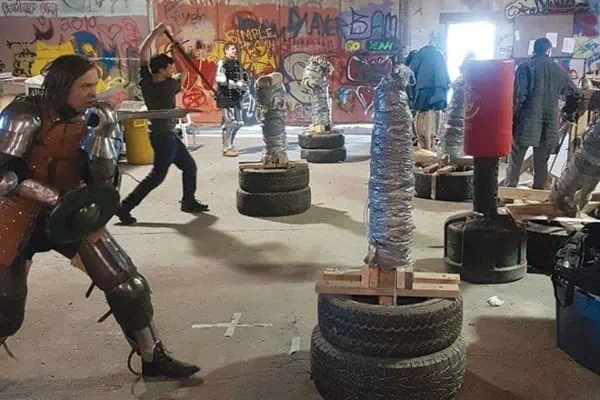For the sake of argument (and who doesn’t like a good argument?), let’s define our terms.
To me, a hobbyist is someone who does something as a pastime, a creative outlet, a pleasurable way she/he can temporarily escape the mundane realities of life and produce something of delight: a quilt, a meal, a lathe-turned soup tureen.
A handyperson is someone who can roll up her/his sleeves and do what needs to be done—unclog a toilet, replace a broken floor tile, re-wire that ugly floor lamp Aunt Betty sent last Christmas.
A do-it-yourselfer, on the third hand, belongs to a different species altogether.
This is someone fearless—possibly foolhardy, possibly just cheap—who thinks to her/himself, “I can do it on my own, even better, and save a bundle in the process.”
This is someone who may well suffer from obsessive-compulsive disorder, who owns more tools than the folks at Lee Valley, and thinks Tim Allen should be a candidate for sainthood.
True confession time.
I’m not a hobbyist. I like to knit, and cook, and even write stuff that doesn’t get reflected in my bank account. But if I have a hobby of any kind, it’s probably procrastination.
I’m sort of a handyperson, I guess. I can replace the flush mechanism in a toilet, mud a decent gyproc wall, and build a relatively wonderful shelving unit.
But when push comes to shove (my, my, that sounds violent), I’m really just an RDIYG—a Recovering Do-It-Yourself Guy.
I say “recovering” because, after many years and many DIY projects, including totally gutting three houses (and even restoring some of them to livable condition), I have finally learned Rule Number One for the do-it-yourselfer:
Don’t start something you can’t finish.
And Rule Number Two:
Prepare a detailed estimate of what the job will cost and how long it will take. Then rip it up.
By the time you factor in all the tools and whatnots you absolutely can’t live without, multiplied by the lost-revenue hours of a gazillion trips to the hardware store to pick up what you forgot the last time, the actual investment will be at least twice your estimate.
And Rule Number Three:
Other family members may not appreciate living in utter chaos for months at a time while you do your DIY thing.
Please don’t misunderstand. Doing it yourself may actually save you money, if the wind is sitting in the right place. And the sense of accomplishment definitely provides enormous pleasure.
Those porch steps in Winnipeg? Masterly. The wainscoting and chair rails in the dining room? A work of art. The pumpkin-orange formica counter-tops? Well, it was the ’70s.
Nearly 40 years on, I hope the current owners of the place in P.E.I. still appreciate the hardwood floor lovingly and painfully nailed (not nail-gunned) board by blistering board.
Memory holds a special place for the wood-stove installation in Marsh Lake deemed “perfect” by the inspector. The gods of taste may even forgive me for the purple bedroom in Cumberland, B.C. The paint job was fantastic. The colour choice was hers.
That charming little fixer-upper in Calgary? The less said the better.
So many years, so many projects. A lot of them done with how-to book in one hand, tools in the other. Many of them overbuilt by a factor of 10. Each with at least one moment of realization, “Well, I’ll certainly never do it that way again.”
Here’s a tip of the hard-hat to all you DIYers out there, whether you’re making a simple spice rack, or creating a full-scale replica of the Cathedral of Notre-Dame de Chartres.
Rule Number Four:
Do it with the passion of a hobbyist and the common sense of a handyperson.
Rule Number Five:
Measure twice. Then measure again. Cut only if you absolutely must.
And Rule Number Six:
Try to finish each project with the same number of fingers and toes as you started.
As for me, I’m still in recovery. No more DIY for this obsessive-compulsive cheapskate.
Mind you, there is that little house I’ve always dreamed of building.
Anyone out there who can show me how to pour a foundation?




